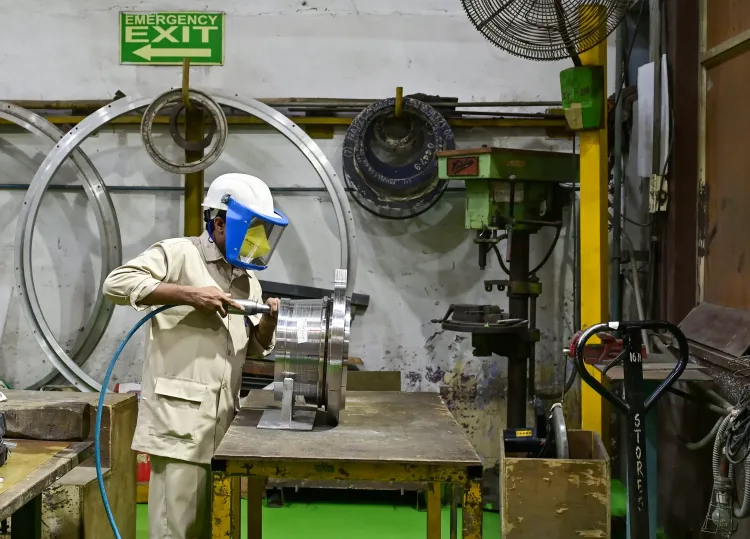Will Manufacturing Represent One-Fifth of India's GDP by FY30?

Synopsis
Key Takeaways
- Manufacturing share in GDP to rise to 20% by FY30.
- Growth supported by policy reforms and demand.
- Record industrial IPOs raising Rs 663.2 billion.
- Expectations for M&A consolidation in key sectors.
- Automation and AI integration in manufacturing.
New Delhi, Nov 24 (NationPress) The percentage of India’s manufacturing industry in gross domestic product (GDP) is anticipated to rise from 13 percent in FY25 to 20 percent by FY30, according to a report released on Monday.
This growth in manufacturing will contribute to one-fifth of India's GDP by 2030, driven by increasing demand, policy reforms, and enhanced integration into global value chains, along with a long-term strategy to reduce dependency on China, as stated in the report from financial services firm Equirus Capital.
“The sector has established a robust foundation for consistent growth. Unless geopolitical issues lead to increased tariff and non-tariff barriers, Indian corporations are expected to experience significant growth in the next five years,” stated Munish Aggarwal, Managing Director and Sector Lead for Industrials at Equirus Capital.
He highlighted that initiatives such as production-linked incentives (PLI), Gati Shakti, and various infrastructure expansion programs have positioned manufacturing as a central growth pillar for the economy.
These initiatives have set the stage for a sustained capital expenditure cycle and deeper structural improvements in the upcoming years, with expectations that the government will continue to reinforce such reforms to bolster employment.
The optimism in Indian markets is reflected by the BSE Industrials Index, which has outperformed the Sensex and other sector indices since July 2022.
Moreover, fundraising in the industrial sector has soared, with FY25 witnessing 32 industrial IPOs that amassed a record Rs 663.2 billion, and mergers & acquisitions along with private equity investments reaching a five-year high of Rs 1,432.8 billion.
Consolidation driven by M&A is set to define the next growth phase across sectors such as EV, electronics, and cement, while private equity interest is expected to remain strong in packaging, aerospace, and defense through FY30.
In addition, the integration of automation, robotics, and AI is anticipated to incorporate deep-tech and machine learning across various industrial segments, with even smaller manufacturing units embracing robotics, as noted in the report.









